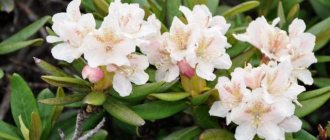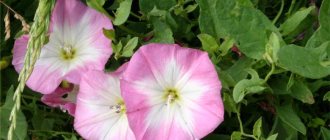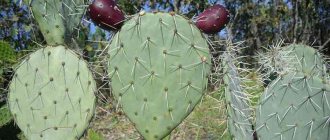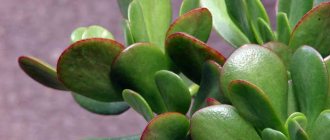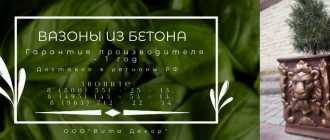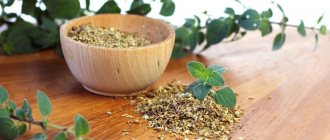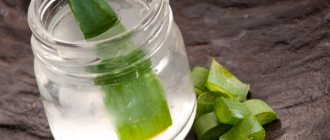A cure for many diseases, a spice, a sweet delicacy, an interesting perennial for landscape design, a natural insecticide - calamus can rightfully be called one of the most useful wild plants. Its unique properties have been used by people for more than four thousand years. Nowadays, they not only harvest wild calamus, but also grow it on plantations. Its rhizomes are used in medicine, pharmaceutical and food industries. This article describes the beneficial properties of this plant and recipes for its use to treat various diseases.
Useful properties of calamus
Substances contained in the rhizomes of calamus have the following beneficial properties:
- have an anti-inflammatory effect;
- produce a bactericidal effect;
- stimulate appetite;
- prevent gas formation in the intestines;
- have a choleretic effect;
- promote the removal of mucus from the respiratory tract;
- have a diuretic effect;
- enhance the secretion of digestive enzymes;
- produce a mild hypotensive effect;
- act as hepatoprotectors;
- eliminate heartburn;
- have a wound healing effect;
- strengthen gums and disinfect the oral cavity;
- reduce toothache;
- have antiparasitic activity;
- strengthen the nervous system;
- improve memory, vision and hearing, especially in the elderly;
- strengthen the immune system, prevent acute respiratory infections and flu.
Recent scientific studies have also revealed the anti-sclerotic and anti-tumor properties of calamus.
Due to its medicinal properties, calamus root is widely used in the treatment of diseases of the gastrointestinal tract, gall bladder and liver, kidneys and bladder, respiratory diseases, problems in the female and male genital area, to strengthen the nervous system, improve hearing, vision and memory in the elderly.
Traditional medicine recommends chewing pieces of fresh root to eliminate bleeding gums. Also, chewing the root pulp can help in breaking the smoking habit. The bitterness included in its composition exacerbates the gag reflex, which makes the smoking process very unpleasant and, over time, discourages the craving for a cigarette. Powder from the dry root is sprinkled on purulent wounds and ulcers.
For women
Calamus root is effective in treating the following disorders of the female genital area:
- colpitis;
- disruptions of the menstrual cycle;
- pathological menopause;
- ovarian dysfunction;
- frigidity (increases sexual arousal);
- amenorrhea and hypomenstrual syndrome.
In treatment, a decoction of the root is used, which is prepared as follows: 1 teaspoon of crushed dry rhizome is poured into 0.2 liters of cold water, brought to a boil and boiled under the lid for 10 minutes. Drink 1-3 glasses a day in small sips. Using the same recipe, a solution for douching is prepared.
For men
In addition to the medicinal properties of calamus in relation to a large number of common diseases, it can be useful for men specifically as a means of supporting reduced potency. Taking calamus preparations helps fight erectile dysfunction, increases male strength, increases libido and improves sperm quality.
Calamus root is used for men in the form of an alcohol tincture. To prepare it, 100 g of finely crushed rhizome is poured with 0.5 liters of alcohol (or vodka) and placed in a dark place. Every 3 days the mixture is shaken to activate the transition of active substances from plant materials to alcohol. After 14 days, the finished tincture is filtered into dark glass bottles and stored at room temperature in a dark place inaccessible to children for no more than 3 years.
Take 20-25 drops, dissolving them in 50 ml of water, three times a day, half an hour before breakfast, lunch and dinner. Drink in monthly courses with a break of at least 7 days. You can conduct no more than 6 courses per year. The same tincture can be rubbed into the hair roots to strengthen them and prevent baldness in men.
What does calamus contain?
Calamus rhizomes contain approximately 5% essential oil, which includes a number of sesquiterpenes - asarone, β-pinene (1%), β-calamen (10%), calamendiol, calamenon, isocalamendiol, sesquiterpene alcohol calameol, as well as D-camphene (7%), D-camphor (8.7%), borneol (3%), eugenol, methyleugenol, elemene, caryophyllene, curcumene, proazulene, acoron, isoacorone, acolamone, neocarone, calarene, acetic and valeric acids, phytoncides and other substances. The content of essential oil in diploid plants is about 2.2%, in triploid plants - 3.1%, in tetraploid plants - 6.8%.
The main component of the essential oil is asarone, a phenylpropane derivative. It is present in the form of two isomers: β-asarone (cis) and α-asarone (trans), usually their total content in the essential oil is approximately 10%. However, the essential oil of some varieties of calamus contains up to 75% β-asarone. The oil obtained from triploid and especially tetraploid plants contains up to 90% β-asarone.
In addition to the essential oil, the roots of calamus contain the plant-specific bitter glycoside acorin, the bitterness acoretin, as well as the glycoside lucenion, the alkaloid calamine, tannins - catechol tannins, resins, mucus, acoric acid, ascorbic (up to 150 mg%) and palmitic acids, starch (up to 20%), choline, vitamins, iodine (1.2-1.9 mg%). The source of the odor is azarinaldehyde.
Pharmacological properties
Substances present in the rhizomes of calamus, mainly essential oil and bitter glycoside acorin, acting on the tips of taste buds, increase appetite, stimulate the secretion of gastric juice, and improve digestion. Calamus roots also have wound-healing, anti-inflammatory, analgesic, and sedative effects. Calamus tones the heart, strengthens the blood vessels of the brain and thereby improves memory and enhances vision.
It has been experimentally confirmed that calamus-based preparations have some antispasmodic effect and, due to the content of terpenoids (asarone, proazulene) in the roots of the plant, have bacteriostatic and anti-inflammatory properties. Galenic forms of calamus have a beneficial effect on the tone of the gallbladder, stimulate bile secretion and diuresis. There is evidence of the calming effect of calamus rhizomes and a mild analgesic effect.
Contraindications
Many people believe that contraindications exist only for chemical medications, while medicinal herbs are harmless and can be taken by everyone. But this is far from true; among plants there are many potent and even poisonous species, so when using herbal medicine we must not forget about caution. Contraindications to the use of drugs containing calamus root are:
- all trimesters of pregnancy, breastfeeding;
- removed gallbladder;
- low blood pressure;
- renal failure;
- exacerbation of peptic ulcer;
- individual intolerance.
The main side effect of taking calamus root is nausea and vomiting. To avoid them, it is necessary to start treatment with minimal doses, and only after making sure that the body’s reaction is normal, gradually increase the dosage to the recommended one.
Attention! Calamus contains potent substances that may not be combined with other drugs - antibiotics, antidepressants, antiarrhythmics, etc. Therefore, you should consult your doctor about the possibility of simultaneous treatment with calamus and other drugs.
Choosing a landing site
Despite the favorite places of growth near water or in shallow water, planting calamus is also possible in an ordinary garden, provided it is provided with a sufficient amount of moisture. The main point of care in this case is watering. When choosing a place for planting, it is still better to give preference to well-moistened areas. These may be depressions in the ground or places where rainwater drainage is provided. Grooves for water access can also be made artificially, providing for their waterproofing.
Lighting requirements, on the contrary, are very modest, so acorus can be planted in any corner of the site where it will be provided with the necessary humidity.
Description of calamus
It is not for nothing that this herbaceous perennial is called marsh; it is a hygrophyte - it grows only in damp, marshy places. Its creeping, sinuous rhizomes, up to 3 cm thick, reach one and a half meters in length. From below they are dotted with roots thick as cords, and from the upper part xiphoid green leaves more than a meter long rush upward, surrounding stems-peduncles, at the ends of which inflorescences appear in the form of a cob with a green leaf-veil. All parts of the plant emit a pleasant odor; the root also has a bitter and pungent taste.
Due to the structure of the inflorescences, the marsh calamus was first assigned to the Araceae family, but then a separate Araceae family was identified. The scientific name of the species, Acorus calamus, was assigned to it back in the mid-18th century; it means “reed calamus.” Common Russian names for this plant:
- iris - due to the similarity with irises in the nature of leaf growth;
- ir;
- flatbread;
- Yavr;
- Tatar cinquefoil, Tatarnik.
The last names did not appear by chance. It was the Tatars who played the main role in the spread of this plant in the Russian Federation. According to their observations, in the reservoirs along the banks of which calamus grew, there was always safe water for drinking. Therefore, during the conquest of Rus', nomads carried calamus roots with them and left them in the shallow waters of all rivers and lakes along the way, where the plants took root and grew.
Pest and disease control
Calamus is generally not prone to disease and is practically not affected by pests. Occasionally, “stray” spider mites are found, but most often there are so few of them that it is enough to wipe the leaves with a soap solution. The tips dry out due to too dry air or lack of watering, especially in the heat.
Photo: semiramisgardens.ru
Catharanthus (60 photos): types, planting, care and cultivation
Spreading
The marsh calamus grows on the Eurasian, North American and South American continents in areas with favorable conditions for it. The plant prefers to “keep its feet” in water, so it grows in wetlands and standing waters, in shallow waters of lakes and slow rivers, irrigation canals. The homeland of calamus is considered to be the territories of India and China, where it can reproduce by seeds, since insects that pollinate its flowers live there. In all other places where calamus grows, there are no pollinating insects, and the plant can only reproduce vegetatively - by dividing the rhizomes.
From Asia to other regions of the globe, calamus was spread by humans due to the valuable qualities of this plant. In medieval Europe, aromatic candied rhizomes were brought from Turkey as an oriental delicacy. The producers of these sweets did not reveal the secret of their production, but in the 16th century, the ambassador of one of the European countries managed to find out the secret and send the obtained calamus planting material by mail. European botanists were disappointed to recognize the mysterious root as calamus, which at that time was already widespread in Western Europe.
Around the same time, in European countries, calamus began to be grown to obtain medicinal raw materials. At the end of the 18th century, the plant was brought to America. Now calamus reed is grown in many European countries, Indonesia, Brazil, China, India, from where its dried roots are exported throughout the world.
Botanical description, photographs and appearance
In addition to the recognized scientific name - marsh calamus (Acorus calamus), in the literature you can find synonymous designations: common calamus, reed calamus or odorous calamus. Among the people, calamus is often called mystic root, calamus, flat cake, flat cake, yaver, tartar, Tatar potion, Tatar cinquefoil, sword root, iris, gaviar, paradise water grass.
The type species of the aroid family (Acoraceae), calamus is a perennial herbaceous plant up to 120 cm high. It has characteristic green, fleshy, erect, flowering, unbranched stems, grooved on one side and with two sharp edges on the other. The stems bear a thick spadix-inflorescence with inconspicuous small trifoliate yellow-greenish flowers.
Calamus blooms, depending on the habitat, from May to August. In warm climates, some flowers have six petals and stamens and form a fruit - an elongated, leathery, dryish red berry.
Sword-shaped, narrow-linear, fleshy, large leaves grow in rosette bunches directly from the rhizome. The edge of the light green leaves is sometimes wavy, “corrugated”.
The fragrant, powerful, brown, cylindrical rhizome crawls almost along the surface of the earth. Numerous small thin roots extend from the horizontal central root. The central root reaches 3 cm in diameter and grows up to 1.5 m in length. When cut, the root is white-pink and has a bitter taste.
Important. In Europe and Russia, the berry never sets or ripens; this is due to the lack of pollinating insects, which live only in the homeland of calamus in India and China.
Chemical composition
The medicinal properties of calamus roots have been used since ancient times; ancient Greek and Roman doctors prescribed infusions from it to their patients. And in the twentieth century, the chemical composition of the plant was studied, and all its biological effects were explained. By distillation using steam, the essential oil of calamus is extracted from the roots, which owes its spicy smell to the high content of the volatile aromatic substance asarone. The oil has a yellow-brown color; dry raw materials contain about 5%. The following were found in the oil and dry residue of calamus rhizomes:
- asarone and other sesquiterpenes;
- phytoncides;
- camphor;
- valeric, palmitic and acetic acids;
- phenols;
- bitter glycosides;
- vitamins C and B4;
- mucous, tannins;
- starch;
- iodine;
- other useful compounds.
These substances give the pulp of rhizomes a bitter taste, pungency and spicy aroma, and when they enter the body they cause a whole range of positive biological effects.
Possible problems
Problems that may arise with indoor calamus include:
- Drying of the tips of leaf blades . Excessively dry air in the room or infrequent moistening of the substrate can cause the tips of the foliage to turn brown and dry out.
- Blackening and dying of foliage . If the room is too warm, the air humidity is very low, or the bush is under the scorching rays of the sun, the tips of its leaf blades first turn black and then die.
- Pests . They appear on the plant infrequently. The greatest harm is caused by spider mites.
Application in medicine
Calamus has long been used in Eastern and European medicine to treat a wide variety of ailments. Now it is used both in folk and official medicine; doctors often prescribe drugs containing it for gastritis, heartburn, flatulence, stomach and duodenal ulcers, and cholelithiasis. In pharmacies, calamus root is sold in the form:
- dried crushed raw materials, including in filter bags;
- alcohol tincture;
- extract in tablets;
- as part of complex preparations - Vikair, Oimetin, Vikalin.
Dried root can be used to prepare powder, tinctures and decoctions.
Attention! It should be remembered that calamus root is a potent drug, so the recommended dosage and duration of treatment courses should not be exceeded.
Treatment of gastritis
For the treatment of gastritis, as part of complex therapy, medications containing calamus rhizome extract are prescribed - Vikair, Vikalin. Herbalists also recommend using infusions and decoctions of the rhizome, and herbal collections containing it. The most popular recipe: a teaspoon of raw material per glass, cook for 10 minutes, consume 0.5 hours before a meal, 0.5 cups of the product four times a day.
Ulcer treatment
Calamus root should not be used during periods of exacerbation of stomach ulcers. The rest of the time, tablets containing Vikalin, Vikair, as well as decoctions and tinctures from plant materials are used in complex therapy. Herbalists recommend taking half a glass of decoction 1 tsp. rhizomes in a glass of water before each meal (20 minutes).
Treatment of skin diseases
Due to the anti-inflammatory and bactericidal properties of calamus, it is used in the treatment of difficult-to-heal and festering wounds and ulcers. The dried rhizome is ground in a mortar or ground in a coffee grinder to a powder and sprinkled on previously cleaned wounds and ulcers. You can also wash the affected areas of the skin with a concentrated decoction.
To quickly cleanse the skin, it is recommended to take an infusion of a collection taken in equal parts: calamus and steel grass roots, nettle grass and string, heather branches, pine buds and juniper fruits. After mixing the ingredients, add a tablespoon of the mixture to 0.35 liters of water and leave for 20 minutes. in a water bath. Take 0.5 tbsp. x 4 rub. before eating.
Heartburn
In ancient medical books, it is recommended to use dried calamus root powder against heartburn. It is swallowed a small pinch (0.3-0.5 g) three times a day, washed down with water. This remedy eliminates heartburn, relieves inflammation of the mucous membranes of the esophagus and has an analgesic effect. A decoction or alcohol tincture of the rhizome works in a similar way.
Pancreatitis
Calamus root helps reduce inflammation of the pancreas during pancreatitis; preparations with it are used in combination with other medications. In herbal medicine, a decoction of rhizomes is used, prepared according to the same recipe and according to the same scheme as in the treatment of gastritis. You can take powder from the root, as in the treatment of heartburn, for greater effectiveness, washed down with centaury infusion, which is prepared at the rate of 1 tsp. dry herbs in 200 ml of water, leave for 20 minutes in a water bath.
Toothache
If your tooth hurts and you can’t visit the dentist, you can relieve the pain with an alcohol tincture of calamus root. It can be bought at a pharmacy or prepared by taking 0.1 kg of crushed rhizome in 0.5 liters of alcohol and leaving it for 15 days in a dark place at room temperature. A cotton wool soaked in the infusion should be applied to the painful tooth, and the pain will subside. The alcohol solution can also be used for rinsing the mouth by diluting 1 tbsp. l. in half a glass of warm water.
Hair loss
One of the secrets of beauties of past centuries who had luxurious long braids is the use of calamus root in hair care. Here is this old recipe: for 4 liters of cold water, take a full cup of calamus root and burdock root and two cups of hop cones, simmer for 10 minutes, use the decoction cooled to a comfortable temperature for washing and rinsing your hair twice a week. The healing properties of calamus help eliminate dandruff, strengthen hair and stimulate its growth.
Calamus root against nail fungus
Foot baths will help in the fight against nail fungus. The decoction for them is prepared as follows: 2 tbsp. l. mashed rhizome plus half a liter of cold water, heat and boil for 10 minutes. The toes are immersed in a moderately hot broth and kept for 20 minutes. Do it daily for 10 days. You should take a tablespoon of the same decoction orally before meals, diluting it in half a glass of water.
Cold treatment
The bactericidal, expectorant and anti-inflammatory properties of calamus rhizomes allow this remedy to be successfully used to treat colds. Used in the form of tea - 2 teaspoons are poured into a thermos with 0.5 liters of boiling water, infused for at least an hour and drunk 1-2 glasses throughout the day.
Periodontal disease
For periodontal disease, it will be beneficial if you add finely ground calamus root to toothpaste. The powder is mixed with toothpaste in a 1:1 ratio and brushed teeth morning and evening. This eliminates unpleasant odor and improves the condition of the gums.
Growing a plant
The soil for planting calamus should be constantly moist and rich in nutrients, especially humus. The ideal place for planting would be a swampy area near water. They dig up the ground, remove all weeds and unnecessary roots, and add peat to it.
Conditions for landing
The plant is planted only in spring. The swamp type of crop can be planted in water. But the planting depth should not exceed twenty centimeters. You can plant calamus at the bottom of reservoirs only in a pot or in a box.
The plant is not capricious in terms of care. It can be planted both in a bright place and in the shade. It is better to prevent direct rays of the sun from reaching the leaves of the crop. It is resistant to drafts and sudden changes in temperature.
Weeding and watering
Caring for calamus is simple; it is enough to periodically weed the soil. It is important not to damage or touch the rhizome.
The culture loves moisture and liquid. If you don't water it on a hot day, it can survive it. Watering is carried out privately and in large quantities.
Frost resistance
Frost resistance does not exist in all types of calamus. The cereal type and the marsh type can tolerate frosts without damage or disease. Flower growers beware. Therefore, in the middle zone of the Earth it is not customary to leave such plants in open ground.
Calamus is hidden for the winter in greenhouses or cellars. Small varieties love warmth and do not tolerate cold weather.
Trimming
Fertilizers are not applied to the soil for calamus. But the circumcision procedure is carried out. This must be done to prevent the culture from growing. In autumn, dried leaves are not removed from the bush. The plant is replanted only at the moment when the need arises.
Collection of raw materials
To prepare medicinal preparations, the roots and leaves of calamus are collected.
In natural conditions, the roots of calamus are collected in summer and autumn. It is preferable to collect leaves in July.
Stages of collecting raw materials
- Harvesting is done when the groundwater level drops. They dig with a pitchfork or take it out with a rake.
- Recovery in plants occurs slowly. In order not to harm natural growth, take 30% of the roots and leaves from each thicket.
- After collection, the roots are cleaned of silt and dry shoots.
- Cut into pieces up to 30 cm long.
- If the rhizome of the plant is thick, then it is broken lengthwise.
- Remove the crust - the cork layer. Thus, purified and unrefined raw materials are obtained.
- The unpeeled root retains its aroma longer.
- Next, the processed raw materials are dried in the fresh air for several days.
- The next stage is drying the raw materials. To do this, lay it out in a dry, warm room that is well ventilated.
- The prepared raw materials can be stored for up to three years.
If a special dryer is used when drying calamus, the temperature is set to +35 degrees.
Otherwise, the raw materials will lose their medicinal properties and the essential oils will leave them. Dry the roots and leaves until brittle. The break should be white and pink.
Where else is calamus used?
In addition to medical purposes, calamus is used:
- in the food industry - as a spice and natural flavoring for confectionery, baked goods, and drinks;
- for the production of candied fruits from the root and jam from the lower parts of the leaves;
- as fragrances for adding aroma to shampoos, creams, soaps and other products of the cosmetic and perfume industry;
- in the alcoholic beverage industry - to add aroma and bitterness to alcoholic beverages;
- for designing ponds in landscape design;
- in everyday life - to repel insects;
- in veterinary medicine – for the treatment of animals;
- as a fodder crop.
Also, rivets for barrels are made from rhizomes, starch is made, and they are also used in tanning leather. The fragrant leaves of the plant are used as a traditional decoration for houses and churches for the holiday of Trinity.
Reproduction and planting of calamus
Calamus does not require any additional difficulties for reproduction. It is enough to divide an adult bush along with its roots and plant it immediately in permanent places. It is recommended to carry out the procedure in the spring at least once every 3-4 years. Each division should have several renewal buds. They are buried in the ground horizontally or at an angle of 30 degrees.
Photo: nature-box.ru
Procurement of raw materials
Calamus rhizomes are harvested in late autumn or early spring, before the onset of floods. The raw materials are dug out with a pitchfork, washed, cleared of roots, leaves and bark, cut into pieces of about 20 cm and dried in the shade. It is not allowed to heat the rhizomes above 30°C during the drying process, because this leads to evaporation of essential oil and deterioration of the quality of raw materials.
During the drying process, the weight of the raw material decreases by 4 times. Drying is considered complete if pieces of rhizomes break when bent. The shelf life of the product does not exceed three years. From one square meter you can collect 0.2-1.2 tons of fresh rhizomes.
Contraindications to the use of calamus and side effects
The use of calamus rhizomes and contraindications to their use are considered comprehensively. Plant-based products should not be used:
- during pregnancy and during feeding;
- with internal bleeding;
- for acute pancreatitis and stomach ulcers;
- with hyperacid gastritis;
- with exacerbation of inflammatory kidney diseases;
- for individual allergies;
- for chronic hypotension.
Swamp calamus should be consumed in small dosages. If a rash and itching, nausea, allergic runny nose or sneezing appear, the use of the plant should be stopped immediately. In especially severe cases, preparations from medicinal herbs, if intolerant, can cause Quincke's edema and anaphylactic shock.
Ayurveda: relation to calamus
In Ayurveda (traditional Indian medicine), calamus rhizomes are used to stop convulsions, epileptic attacks, to improve brain function, and for clarity of consciousness. According to this philosophical system, tartar is considered the best antidote to the effects of marijuana. The side effects of all hallucinogens can be neutralized by calamus root.
In Ayurveda, it is believed that the shoots of the tartar plant contribute to the development of the mind of growing children. To obtain the desired effect, the gold wire is heated and inserted along the axis into the center of the calamus twig. The plant is then ground on rough stones and mixed with mother's milk. The child is given this remedy to improve mental abilities, half a spoonful.
Also in Indian medicine, calamus is used to improve memory. To do this, it is ground into powder and a pinch is consumed with honey.
